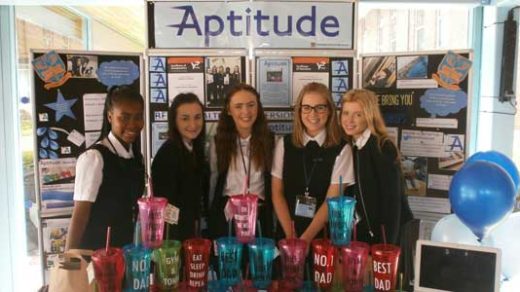Thousands of pupils secure place at their first-choice university as grading returns to normal

Young people across England are celebrating exam results this morning (17 August) – with thousands of them moving on to university, apprenticeships and the world of work.
Overall, 79% of 18-year-old pupils in the UK receiving a decision today have gained a place at their first choice university.
16, 530 students who received free school meals (FSM) have also gained a place at university which is a 60% increase from 2019.
The Department for Education said in a sign that grading is returning to normal, this year, 27.2% of UK entries for A-levels achieved a grade A and above, slightly higher than 25.4% in 2019, before the pandemic. 76% of UK entries achieved a grade C and above, in line with 75.9% in 2019.
This year has seen mathematics continue to be the most popular A-level since 2014 as well as record-breaking numbers of A-level entries in computing, producing over 16% more entries than last year.
The data from this year’s results day show 34.8% of entries from free schools and 25.4% of entries from academies getting a grade A or above – compared to 22.0% of entries from Local Authority maintained comprehensive schools.
Around 3,400 T-level students received their results today as the second ever cohort completed the new, high quality technical qualification. 90.5% of T-level students achieved a pass or above.
T-levels offer a wide range of progression options as many of these students will also go on to do apprenticeships, and UCAS has today revealed that 1,220 T-level students have been accepted into university, demonstrating the value and reputation of these qualifications.
Over 250,000certificates were awarded for those completing their Level 3 vocational and technical qualifications.
Education secretary Gillian Keegan said: “Congratulations to everyone receiving results today. There are more opportunities than ever before so whatever your results, I’m sure you will have a bright future ahead of you.
“It’s fantastic to see the number of young people accepted to university – including to their first choice – continue to be up on the years before the pandemic, while thousands more go off to exciting apprenticeships and the world of work.
“As always, there are a wide range of fantastic options for those who did not get the results they hoped for, and students can find out more by visiting the UCAS website or through the National Careers Service.”
Paul Whiteman, general secretary of school leaders’ union NAHT, said: “Congratulations to all students receiving their results for A-levels, T-levels, BTECs and other vocational and technical qualifications (VTQs) today. These grades are the result of a huge amount of hard work in challenging circumstances, by both students and school staff. Everyone should be very proud of their achievements.
“Although we are seeing different A-level results nationally this year, this is not a reflection of the achievements of students, but simply a result of the government’s decision to transition back to pre-pandemic grading models. The numbers are a reflection of the system and not the students. Universities, employers and other providers know this and should take this into account when making decisions on places and offers.
“It is vital that everyone remembers that we cannot compare this year’s results with those from previous years. The student cohort, the context and the approach to grading has been different every year since 2019 so simplistic comparisons are unhelpful and will not tell the full story of the experiences of students or their schools and colleges.
“The results students receive today are not only an acknowledgement of their hard work and achievements but are a passport to the next stage of their lives. There are so many options available to them to get onto the path for their chosen futures whether that is through further study, training or employment.”
Beth Elgood, director of communications at EngineeringUK, commented: “Congratulations to everyone receiving their A-level and T-level exam results today. This cohort of students has experienced significant disruption to their studies over recent years and should be proud of what they’ve achieved.
“With STEM A-levels providing important routes into engineering and tech careers, it’s encouraging today’s results show a substantial 16.7% increase in the uptake of computing A level – the highest increase for any subject.
“However, the decrease in the number of students taking physics (-3.5%) and design and technology (-6.7%) A-levels is concerning, particularly given an overall uptick in A-level entries as a whole (+2.2%). It’s also disappointing to see the percentage of girls taking A-level physics has remained at just 23% – something we urgently need to address.
“T-levels are still relatively new, but 1,592 students are receiving an engineering related T-level result today, of whom only 9% are female students. If we are to improve the diversity of the engineering and tech workforce, it’s imperative this proportion improves. It’s also been reported there has been a drop off in the number of students who enrolled on T-level courses compared to those receiving their results today – we need to understand and address the reasons behind this.
“As a sector that is challenged with acute workforce shortages, it’s important that we closely monitor and strive to increase both the number and diversity of young people studying science, technology, engineering and maths (STEM) related subjects. Today’s results confirm there is still work to be done.”
If students have not received the grades they were hoping for, there are thousands of high-quality courses available through clearing. This morning there were nearly 29,000 courses available, many of which are at the most selective universities. Clearing opportunities can be accessed through this link: https://www.ucas.com/clearing-launch
For those who do not wish to go through clearing, students can call the National Careers Service on 0800 100 900 for advice on their next steps.
There are also options available other than university. Apprenticeships offer people of all ages and backgrounds the chance to gain the skills they need to build successful careers, while making sure employers can access the skilled workforce they and our economy need to grow.
For more information and to explore all the other exciting options available to young people go to: Get the Jump: explore your education and training choices | National Careers Service








